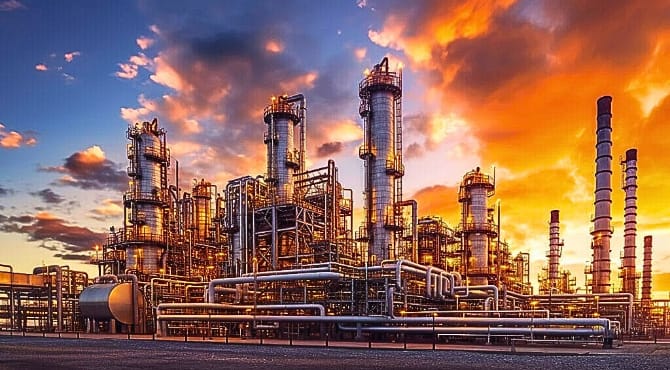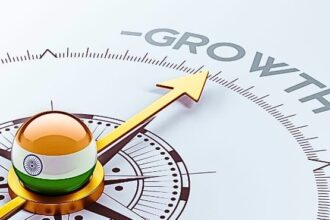India’s petroleum and energy sector is undergoing a massive overhaul, caused by implementation of forward-looking policy measures, a strong investment climate, and innovation. In his speech at the Energy Technology Meet in Hyderabad, Shri Hardeep Singh Puri, Minister of Petroleum and Natural Gas, underlined the incredible changes that empowered India to rank among the leaders of the global energy landscape. This paper derives from themes of his speech and sheds the light on India’s progress in refining, biofuels, petrochemicals, and green energy, all of them pointing to India’s becoming a leading global refining and energy hub.
India’s refining sector: Expansion and global impact
At present, India has refining capacity of roughly 258 million metric tonnes per annum (MMTPA), and this number is planned to increase to 310 MMTPA by 2030 and might even reach 400-450 MMTPA in the long-term forecast. While up to 20% of the current worldwide refining capacity—over 100 refineries—are expected to be closed by 2035, India’s deliberate enlargement not only reaffirms its position as one of the three major refining hubs globally but also places it as a source of stability amidst the upheaval of the industry.
This bold enlargement is backed by the power and unification of India’s refinery infrastructure. Thanks to the world-class and export-ready facilities, India ranks as the fourth-largest refining country as well as one of the top exporters of petroleum products, exporting to more than 50 countries and thus, generating export revenues in excess of USD 45 billion in FY 2024–25. The sector is almost one-fifth of the country’s revenue source, and hence, the core of the total operational and financial performance of the public and private players in the sector is robust.
Accelerated achievements in biofuel blending
India’s journey with biofuel blending can only be described as a rapid progression. Starting with a very low target of 5% in 2006, the country managed to reach 10% ethanol blending five months before the deadline set for 2022. The achievement of the 20% blending goal has been pushed forward by government policies and a wide range of support mechanisms, such that the target has been brought forward from 2030 to 2025–26. These milestones echo India’s capability of setting tough energy targets and achieving them, thus making it a global leader in sustainability.
Petrochemical integration and future growth
The Indian petrochemical industry is quickly becoming a major contributor to the efficiency and cost-effectiveness of refinery operations. The petrochemical intensity index has been raised from 7.7% to 13%, reflecting a substantial growth path, though India’s utilization is only about one-third of the global average. The domestic petrochemical sector is already looking ahead to its future, with the planned expansions of integrated petrochemical complexes that will increase the level of value addition and export competitiveness, thereby facilitating India’s wider economic and industrial leadership ambitions.
Innovation, indigenization, and atmanirbharata
Independence and energy sector innovation were among the main points that Puri touched on in his speech. By managing 80% import substitution across the value chain, India is gradually achieving self-reliance or Atmanirbharata, and at the same time, it remains competitive on the global stage. The government’s Production Linked Incentive (PLI) program and the creation of the National Centre for Catalyst Research are speeding up innovation and production in cutting-edge energy tech and thus, they are the harbingers of a new era of homegrown development.
Advancing green energy: Hydrogen, natural gas, and biofuels
One of the major contributions India is making to the green energy world is the production of green hydrogen. The recent tender results by IOCL and HPCL have reduced the cost of green hydrogen from USD 5.5/kg to almost USD 4/kg, which is a very important step towards its commercial viability. The country’s energy transition plan also features the increased use of natural gas in the energy mix (from 6% to 15%) and the expansion of renewables, all being done in a way that is consistent with climate goals and energy security. The Global Biofuels Alliance is set to become an engine for the international biofuels trade, including sustainable aviation fuel, which will further India’s role as a global green energy leader.
India’s energy sector, which is based on a refining legacy of over a hundred years but is revitalized by modern innovation, is ready to change the world power dynamics. Such as: increased capacities, deep policy support, and a lively ecosystem linking technology, sustainability, and investment – India is not only fulfilling its domestic needs but is also increasingly supplying global markets. India’s ambition to become the world’s second-largest refining country by 2035 seems quite realistic as the country is embarking on its journey to a USD 10 trillion economy. Its young population, growing energy demand, and the presence of a decisive policy environment will be the reasons why India will determine, instead of merely following, the path of the global energy future.









